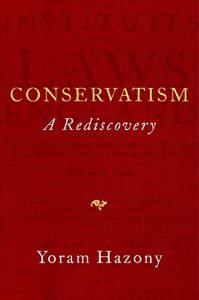The federal government is gearing up for another round of conflict with public servant unions over the practice of employees working from home, instead of traveling to offices in Ottawa daily. The latest demand is that workers attend their offices three days a week. You might think this to be a reasonable requirement considering the end of all COVID-related restrictions, but you would be wrong.
There has been much talk – particularly in conservative circles – about public servants still not having fully returned to work. The accusation is entirely undeserved. Employees whose physical presence in an office is essential to their job returned long ago. Those whose physical presence in an office is not required have been working all along – from their homes. This has not impaired government services in any meaningful way, something Treasury Board itself concedes by implication. If attendance at an office were truly imperative, officials would be demanding the full five days a week instead of the three they are seeking.
So why the latest directive? To understand this, you must understand a bit of Ottawa history.
In December of 2012, after almost a decade of debate, Ottawa’s city council approved the replacement of its bus-based rapid transit system with light rail including the construction of a subway under the city’s downtown area. Phase one of the project was plagued with problems from the start, leading to delays in completion and increases in cost. Those problems did not end with its completion in 2019 either. Rail cars broke down with alarming frequency, as did the system’s power grid, leading to shutdowns lasting hours, days, and even weeks. Stations were unable to cope with the number of passengers waiting for trains while commutes were regularly delayed for hours. Buses had to be pressed back into service requiring re-hiring of drivers who had been laid off or who had taken early retirement and hiring and training of new drivers to make up the inevitable shortfall.
In short, the “O-Train” (as it was christened) has turned out to be an unmitigated disaster.
It was about this time that COVID first came to the shores of Canada, leading to restrictions on the movement and activities of citizens, culminating in stay-at-home orders. Despite these constraints, as noted above, the federal government continued to operate, except that work was now being done by employees from computer terminals in their homes rather than in their offices.
This leads to the obvious question – does the government need all this office space in the first place?
That issue was raised more than a decade ago by Dr. Ian Lee of the Sprott School of Business at Carleton University in Ottawa. Dr. Lee warned that technology would revolutionize office work as profoundly as it did manufacturing in the 1970s and 80s, except that it wasn’t staff who would be jettisoned, but physical office space.
The reason Dr. Lee’s prediction took the form of a warning was because municipal governments depend on tax revenue generated by commercial properties that heretofore have been filled with all those office workers. As more white-collar businesses shed the expense of unneeded office space, Lee cautioned, those municipalities will experience a commensurate and irremediable decline in that revenue. COVID-related restrictions did not cause the shift to telecommuting – many companies were already embracing the practice prior to the pandemic – but it did accelerate it, particularly when it comes to big enterprises requiring large numbers of clerical staff… like government.
Which brings us back to the Treasury Board’s determination to force federal workers back to their Ottawa offices three days a week. The city isn’t just facing a decline in property taxes and government grants in lieu of taxes, it is struggling with a massive loss of revenue due to the small number of people using the O-Train to travel to and from work every day. And even among those who do have to commute to jobs downtown, many are opting to drive their cars rather than risk falling victim to a notoriously unreliable O-Train.
And then there is the expense of operating the O-Train, which is essentially fixed. Unlike a bus-based system. light rail service cannot be adjusted in response to changes in ridership numbers or commuter needs.
Finally, there is the enormous cost of constructing the system in the first place. And for those who think that the project was worth the trouble and expense just to reduce Ottawa’s “carbon footprint,” think again. The entire Trillium Line of the system along with its Airport Link is designed to run with diesel-powered trains.
Why the obsession with forcing federal employees out of their homes and into those unneeded offices in downtown Ottawa?
In a word – money. The City of Ottawa desperately needs the revenue from commuter fares and it needs the revenue generated by fully occupied office buildings to remain solvent, and – with the active support of the Ford government – it has convinced the Trudeau government to use its powers of coercion to get that money.
It’s the classic case of government forcing the people to serve it, rather than it serving the people.
I do not believe in public sector unions much less public sector strikes. If Ottawa’s federal public servants go out on strike over this, however, don’t be surprised to see me walking a picket line.
This column was first published in The Western Standard


 Conservatism: A Rediscovery explains how Anglo-American conservatism became a distinctive alternative to divine-right monarchy, Puritan theocracy, and liberal revolution. After tracing the tradition from the Wars of the Roses to Burke and across the Atlantic to the American Federalists and Lincoln, Hazony describes the rise and fall of Enlightenment liberalism after World War II and the present-day debates between neoconservatives and national conservatives over how to respond to liberalism and the woke left.
Conservatism: A Rediscovery explains how Anglo-American conservatism became a distinctive alternative to divine-right monarchy, Puritan theocracy, and liberal revolution. After tracing the tradition from the Wars of the Roses to Burke and across the Atlantic to the American Federalists and Lincoln, Hazony describes the rise and fall of Enlightenment liberalism after World War II and the present-day debates between neoconservatives and national conservatives over how to respond to liberalism and the woke left.
